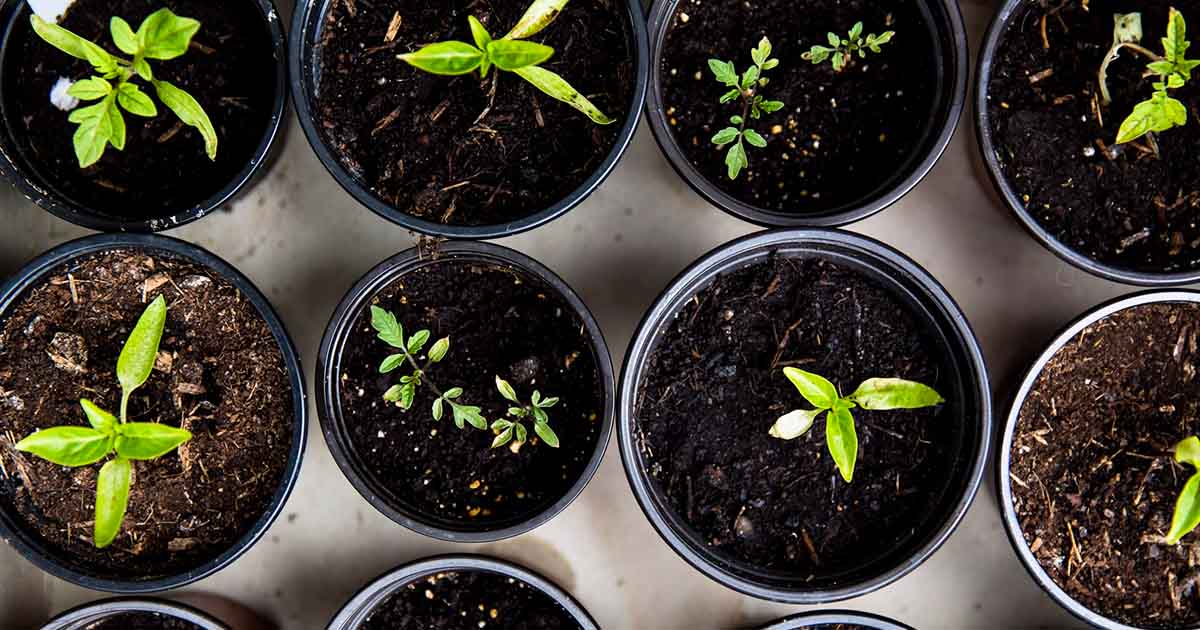Gardening for Beginners - 11 Easy Tips

Do you want to get into gardening but don’t know where to start? Like cooking without a recipe, gardening is something that takes time and practice to do with ease. Getting the right gardening help is important when you’re just starting out, which is why we’ve compiled 11 easy garden ideas for beginners to make your new hobby a breeze.
How to Start Gardening: First Steps
1. Make a rain gauge
A rain gauge is an indicator of how much water you need to give your plants each week. It can also help you to predict the growth rate of your garden, and whether weeds will start to sprout. Making one is as simple as cutting a plastic bottle in half, marking millilitre milestones, and leaving it outside to catch the rain. Make sure it’s weighed down and stable, and that harsh wind or weather isn’t going to knock it over and mess up your readings. To make it easy to reference, you can also put a few drops of food colouring in the bottom of the bottle.
2. Find your hardiness zone
The hardiness zone map is a way to identify the right plants to cultivate in your area. Plants can only survive in certain temperatures and weather conditions, and the last thing an aspiring gardener wants to do is invest in the wrong plants and lose them over winter. If you understand both the USDA and the RHS hardiness systems before buying seeds or plants, your garden will thrive in all seasons!
3. Plan your layout
Planning your garden layout can be a lot of fun! Consider things like how to shield your garden from wind, how much privacy you’d like, and the view you’ll have from your windows. Plan out paths, flowerbeds, lawn areas, patios, ponds and trees. Make sure you take steps to protect the structure of your house, such as planting trees with large root systems further away from the building and making sure you can properly manage climbing plants.

4. Invest in good tools
Some of the best gardening advice for beginners is to invest in the correct tools. While cheap tools are easy to get, blunt or plastic tools can be strenuous to use and may discourage you from working in your garden. Make sure you start out with good gloves, a shovel, a trowel, a fork, pruning shears, a watering can or a hosepipe, and a lawnmower if you want to cultivate grass. Not all of these are a necessity, but having them on hand gives you a method to deal with any situation that may arise.
Top gardening tip: Future-Proof your Plants
5. Restrict aggressive plants
One of the core gardening basics is how to properly manage your plants. If you plant aggressive flora such as mint, bamboo, or vampiric species, you’ll want to take steps to protect the rest of your garden from being overrun. The best way to do this is to plant them in flower pots, although you can also plant them in the ground with proper precautions in place. Cut the bottom off an old plant pot and push it into the soil around the offender, stopping its roots from spreading sideways.
6. Protect your plants
To prevent the local wildlife from making off with your seeds, lay netting over the soil supported by bamboo canes, or you can purchase plant covers from garden centres. You can remove the netting when your plants have sprouted and are no longer considered bird food but leaving it in place to protect the roots is also fine. Your seedlings will grow through the gaps anyway!

7. Create movable pots
Flower pots can be heavy, especially when they’re made of pottery. Rather than filling the entire pot with soil and struggling to move the plant, you can half-fill it with packing peanuts before filling the rest in with lightweight soil. This will make your pot much easier to move around, while also leaving plenty of room for roots to grow.
8. Take care of potted plant roots
When you buy a grown plant from the garden centre, or feel that it’s simply time to move one of your potted plants straight into the soil, you may notice that its roots have clumped and become tightly packed. To increase its chances of survival, you should separate these roots before replanting. Tease the roots gently until they separate from each other. If they need a bit more convincing, take a knife and cut vertically through the knotted roots before planting in the garden.
Maintain your Garden
9. Weed regularly
Weeding is essential in order to stay on top of garden maintenance. If left too long, weeds can flower and throw out seeds, causing far bigger problems next year. Weeding is also a great opportunity to keep an eye on the health of your plants, since you’re getting up close and personal with the soil. Keep an eye on unknown garden plants and make sure you weed regularly, whether it’s once a week or once a month. The season also matters; in spring, you should weed more frequently than you would in winter.

10. Monitor garden pests
To protect your plants from pests, you need to be aware of what pests are using your garden and whether it’s becoming a problem. Aphids, blackflies, slugs, and snails can decimate your hard work if left unchecked. Take steps such as using copper strips to deter slugs and introducing ladybirds to keep the aphid population low. If you notice a problem such as an infestation, deal with it as quickly as possible! Unchecked pests can escalate quickly.
11. Stay on top of garden waste
One of the most important things to do to maintain a healthy garden is to stay on top of waste! Pruning, composting, digging, and weeding are all waste-producing activities, and your bins may not always be able to handle an intense gardening session. One of the most invaluable gardening tips for beginners is to be prepared to manage this waste!
Check out our blog for more easy gardening advice, including how to make your garden as eco-friendly as possible!

